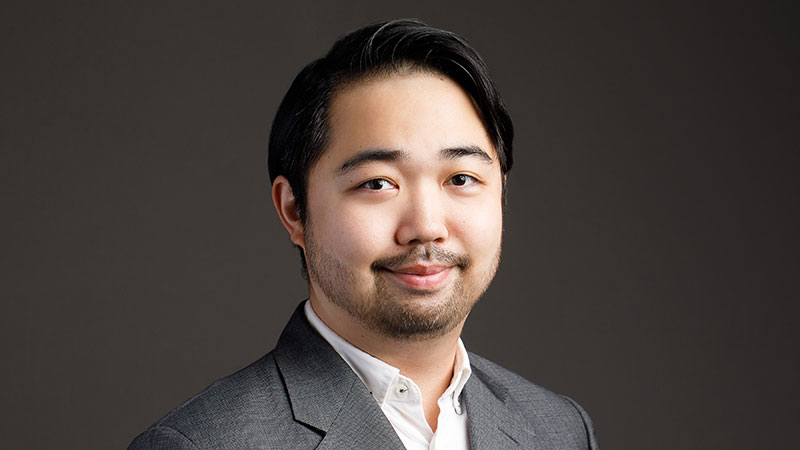Meet Raphael (Donghyun) Park, PhD, the newest Scripps Research Fellow who is determined to uncover the mechanisms of tuberculosis. Using cutting-edge imaging techniques, Park is focused on enhancing our understanding of how the bacteria hijacks and infects host cells. His ultimate goal? To design antibacterial medicines that are much more effective at treating the deadly infection.
Scripps Research Magazine caught up with Park to learn more about his research, his time growing up in the Philippines and where he can be found when he’s not illuminating complex protein machinery in the lab.

What are you studying here at Scripps Research?
I’m studying the Mycobacterium tuberculosis, the bacteria that causes tuberculosis. It’s surprisingly one of the most fatal infections, but it’s something we don’t always think about living in a developed country. There aren’t very good treatment options out there, which is why I’m trying to come up with a new scientific way of fighting the disease. Specifically, I’m examining the structure of the bacterial secretion machinery, and seeing if there are new ways of targeting it.
Why is the structure of M. tuberculosis unique?
M. tuberculosis has a mechanism that secretes its bacterial proteins into human cells via secretion machinery. This is how it’s able to evade immunity and continue multiplying throughout the body. I’m studying the structure and function relationship of this artillery protein complex to see how we can develop better antibiotics.
Using cryo-electron tomography (cryo-ET)—a high-resolution imaging technique—I’m striving to really understand this nano-machinery and how it operates. This has been hard to do in the past, because the protein complex is actually quite large and not necessarily rigid. With cryo-ET, we can study the structure in its native state inside of a cell without purifying it. This enables us to observe the functional form, without losing protein components to the purification process.
Was there something that inspired you to pursue infectious disease research?
I grew up living in a few different countries, including the Philippines from ages 12 to 19. I had moved from Korea, and I was astounded to hear about the different life-threatening infections that people were dying from—people that I knew. And this has always been in the back of my head. I never imagined myself becoming a scientist because that always seemed like such a luxury. I came to the United States for college after following my older sister here, and I was initially thinking about pursuing a degree in business. But when I told my mom, she had other ideas. I decided to go the chemistry route instead, and then switched my major to microbiology.
What drew you to Scripps Research?
Both the infectious disease and structural biology capabilities here are so strong. Growing up as a structural biology enthusiast, I would read papers by renowned scientists like professors Ian Wilson, Andrew Ward and Gabe Lander, and even more recently from rising stars like assistant professor Danielle Grotjahn. It was obvious to me that Scripps Research was the perfect place for me to pursue both of these scientific disciplines at once. Even when I was interviewing at different schools, I knew that I would come to Scripps Research if I was given the opportunity.
What are your interests outside of the lab?
I really enjoy film photography. But I do have a 10-month-old son now, so when I’m not working in the lab, I’m usually helping raise him.